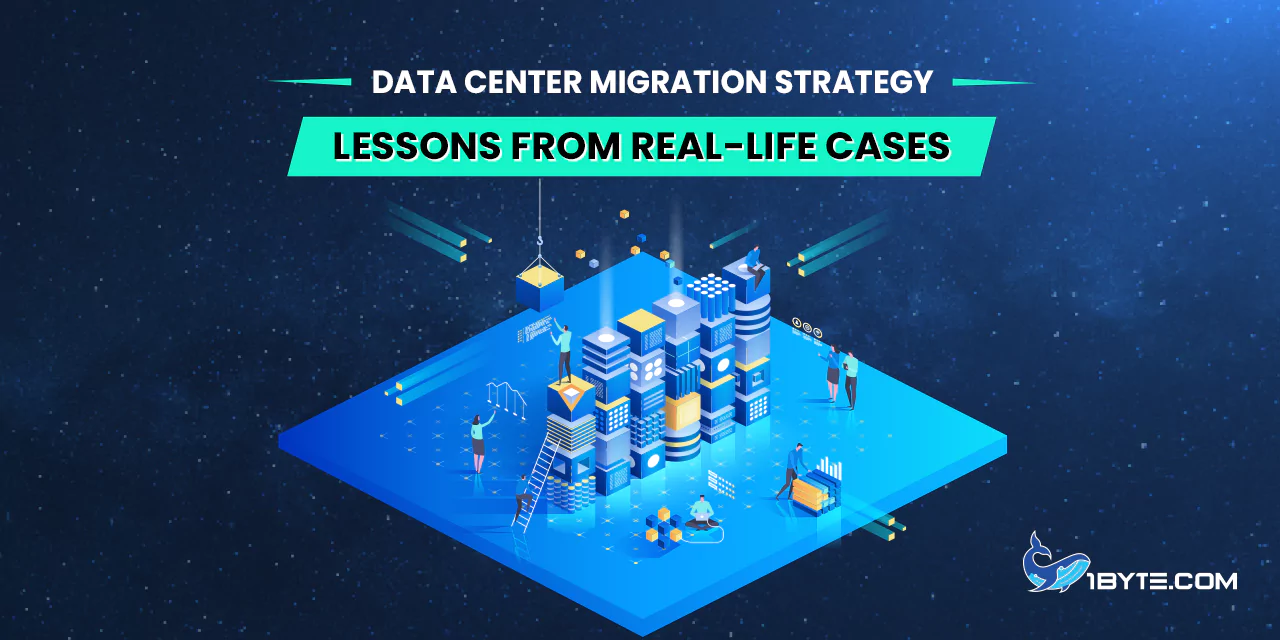For today’s world, the need to upgrade and optimize data center infrastructure has become a priority for businesses seeking efficiency, scalability, and enhanced performance. A well-executed data center migration strategy holds the key to achieving these objectives while minimizing disruption and risk. This article delves into the realm of data center migrations, drawing valuable insights from real-life cases. By examining both successful transitions and challenging experiences, readers can uncover essential lessons that will guide them toward crafting effective migration strategies of their own. Whether embarking on their first migration journey or looking to refine existing practices, understanding the nuances of data center migration strategy is crucial for modern businesses aiming to stay competitive and adaptable in an ever-changing digital landscape.
What is a Data Center Migration Strategy?
At the heart of every successful data center migration lies a well-crafted data center migration strategy. This pivotal element serves as a roadmap that guides businesses through the complex process of relocating their digital infrastructure.
What is data center migration?
Data center migration is a strategic process that involves transferring a company’s critical IT infrastructure, applications, and data from one physical location or environment to another. This migration can encompass various components, such as servers, storage systems, networking equipment, and more. The primary aim of data center migration is to optimize and enhance the performance, scalability, and efficiency of a business’s IT operations.
During data center migration, businesses may move their infrastructure to a different physical facility, transition to a cloud-based environment, or consolidate multiple data centers into a single location. This process requires careful planning and execution to ensure minimal disruptions to operations and to prevent potential data loss.
The decision to undergo data center migration is often driven by the need to modernize outdated hardware, reduce operational costs, enhance security measures, or accommodate business growth. It’s important to note that data center migration is not solely a technical endeavor; it also involves aligning the migration strategy with the overall business goals and objectives.
Why is a data center migration strategy important?
A well-structured data center migration strategy serves as a vital compass during the intricate process of relocating IT infrastructure. Such a strategy provides a roadmap that outlines the necessary steps, mitigates risks, and ensures a successful migration. Without a robust strategy in place, businesses may face unplanned downtime, data loss, increased costs, and operational disruptions.

A data center migration strategy is essential for several reasons. Firstly, it helps identify potential challenges and bottlenecks early in the planning stage, allowing businesses to devise solutions proactively. Secondly, such a strategy facilitates effective resource allocation by detailing the roles, responsibilities, and timelines for various teams involved in the migration. This level of organization is crucial for maintaining a smooth transition.
Moreover, a well-defined data center migration strategy minimizes the impact on end-users and customers. By ensuring that services remain accessible and disruptions are minimized, businesses can uphold their reputation and avoid customer dissatisfaction. Additionally, the strategy addresses data security and compliance concerns, safeguarding sensitive information during the migration process.
In essence, a comprehensive data center migration strategy provides a structured approach that optimizes the migration process, reduces risks, and safeguards business continuity. By considering various aspects such as technical requirements, business objectives, and end-user experience, businesses can navigate the complexities of migration with confidence and achieve successful outcomes.
Recommended reading: A Guide to Effective Cloud Orchestration
5 Successful Data Center Migration Cases
Real-life experiences offer valuable insights into the intricacies of data center migration strategy. By examining successful migration cases, businesses can gain practical knowledge and inspiration for their own migration journeys.
Tape Ark
In the energy, oil, and gas industry, the challenge of managing decades’ worth of geologic information stored on tapes for archival purposes was a substantial obstacle. The nature of tape storage, while efficient for infrequently accessed data, posed a hurdle by isolating vital data from regular workflows.
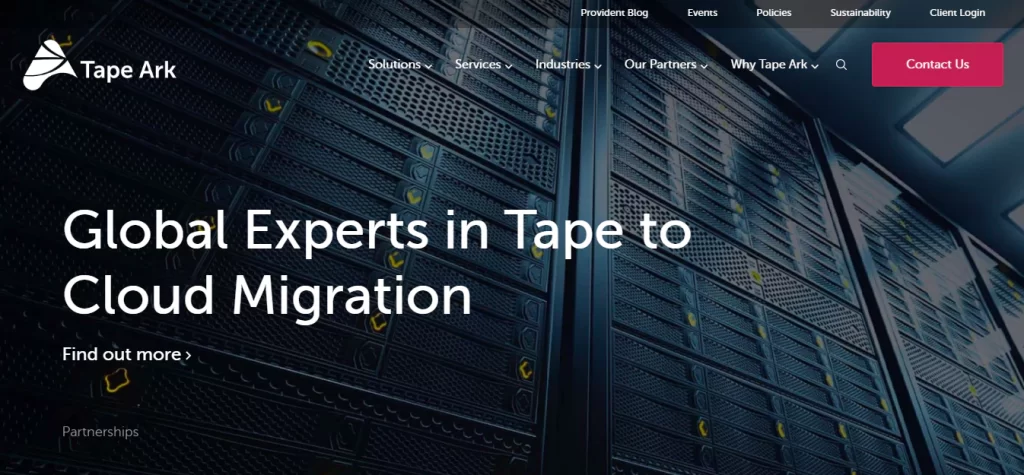
The industry recognized the potential of cloud storage, offering the promise of AI-driven analysis and future exploration opportunities. However, the sheer volume of tapes presented a crucial question: how to transition these archives to the cloud effectively?
This is where Tape Ark, a tape-to-cloud migration service, stepped in. Originally developed within the oil industry, Tape Ark has emerged as an AWS Select Technology Partner. Their innovative approach involves loading tapes into a mass tape ingest system called Arkbridge, which strategically assesses data sets and predicts cloud storage requirements.
Automation plays a pivotal role in Tape Ark’s process. The system automatically breaks down media into manageable objects, complete with JSON metadata manifest files, automated checksums, name validation checks, and final storage within AWS’s servers.
While Tape Ark has a robust partnership with AWS, it positions itself as cloud-agnostic, capable of collaborating with major cloud providers like Google and Microsoft Azure. Their technology boasts high scalability, effortlessly managing extensive data volumes in the petabyte range.
AdvancedMD
In terms of health care management software, AdvancedMD stands as a prime example of a successful data center migration strategy. As a software-as-a-service (SaaS) provider for healthcare institutions, AdvancedMD offers critical solutions including data management, billing, patient records, and telemedicine applications.
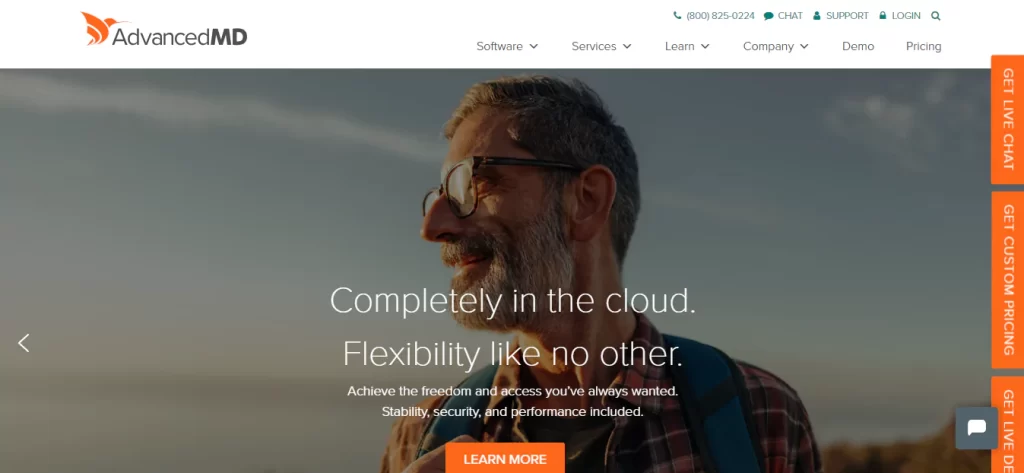
Originally relying on an onsite NetApp storage array, AdvancedMD recognized the potential for enhanced efficiency through cloud migration. With a vision to optimize its operations, the company transitioned its administrative backend to the Cloud Volumes ONTAP for AWS—a hybrid cloud solution tailored for enterprises.
The decision to migrate came with notable benefits. Leveraging Amazon Web Services (AWS), AdvancedMD gained access to infinite scalability, essential high availability data redundancy suitable for the highly-regulated healthcare sector, and improved data compression and deduplication capabilities. Automated tiering further streamlined data management.
Facilitating this migration was the indispensable SnapMirror technology from NetApp. This software boasts a user-friendly interface, simplifying the transfer process through snapshot copies. SnapMirror offers multiple operational modes: asynchronous replication at set intervals, synchronous updates for immediate data accuracy, and semi-synchronous mode with a minimal lag.
The migration process was made even smoother with Cloud Manager—an automated tool that configures SnapMirror’s relationship with the cloud destination and facilitates dynamic host provisioning. By utilizing this service, AdvancedMD ensured a swift, secure transfer of sensitive data to the cloud, all while shifting from capital expenditure (CapEx) costs to operational expenditure (OpEx).
Rossi Residencial
In the real estate development sector, the successful execution of a data center migration strategy proved transformative for Brazil-based powerhouse Rossi Residencial. As a major construction firm, Rossi Residencial’s financial operations relied heavily on SAP solutions to manage taxes, regulatory compliance, and other critical financial aspects.

However, the challenge lay in the fact that their systems were dispersed across three distinct cloud providers, leading to fragmented processes and costs. Recognizing the potential for substantial savings and streamlining, Rossi Residencial aimed to consolidate its financial software onto a single platform—Google Cloud.
To accomplish this complex migration swiftly and seamlessly, Rossi partnered with Sky.One, a migration service provider. Sky.One’s meticulous approach involved scoping and mapping the project’s requirements, followed by the cloning of Rossi Residencial’s existing virtual appliances onto Google Cloud. Remarkably, this intricate migration was completed within a month, all without a single service outage.
Central to this success was the utilization of Migrate for Compute Engine, a highly-scalable enterprise-grade migration software designed to minimize downtimes. Before initiating the migration, Migrate conducts non-disruptive testing and validation to ensure a smooth transition of production workloads and data. This rigorous process ensured that Rossi Residencial’s migration was executed without any complications.
The outcome was twofold: not only did Rossi Residencial achieve a seamless migration with zero outages, but they also realized a remarkable 50% reduction in hosting costs compared to their previous cloud provider. In the context of data center migration strategy, Rossi Residencial’s case underscores the importance of strategic partnerships, careful planning, and the utilization of scalable migration tools. The successful outcome speaks volumes about the potential rewards of a well-executed migration strategy.
AxFina
AxFina Holding’s data center migration strategy stands as a testament to the transformative potential of modernization. This European financial services provider faced a unique challenge when it acquired a leasing company, inheriting its dated IT infrastructure.
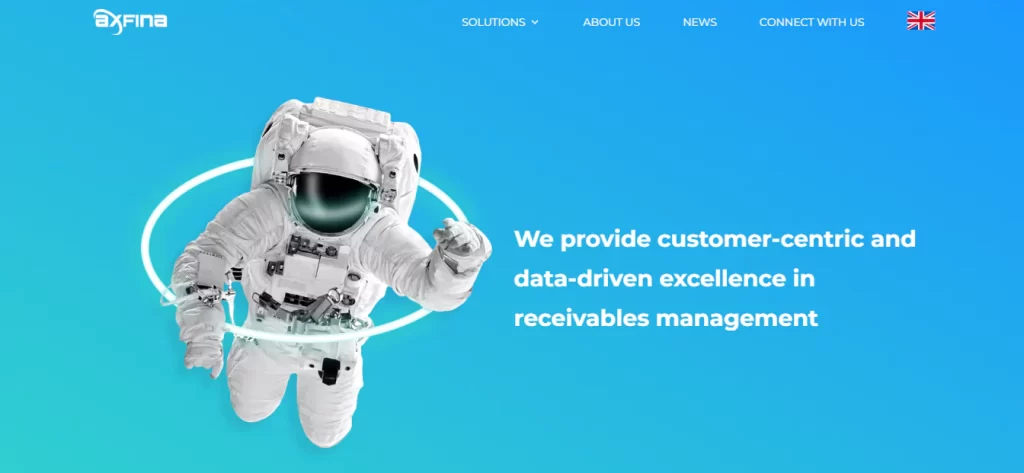
Recognizing the need to streamline operations and embrace advanced technologies, AxFina embarked on a journey to uplift its computing services to a new cloud provider. Microsoft Azure emerged as the chosen solution, known for its robust reputation in regulatory compliance and data security—an imperative for the financial sector.
With the goal of reducing recurring infrastructure-related costs by an impressive 60–70%, AxFina partnered with a specialized regional cloud architect engineering team well-versed in Microsoft Azure data transitions. Despite a demanding timeline, AxFina successfully migrated its data into Azure, adhering to best practices outlined in Microsoft’s Cloud Adoption Framework.
The experience left AxFina not only satisfied but also inspired. The success of the migration led them to solidify their choice of Azure as the preferred cloud service for future expansions. This strategic move highlights the long-term benefits of a well-executed data center migration strategy. AxFina’s story showcases how a forward-thinking approach, aligned with the right cloud partner, can drive significant cost reductions, operational enhancements, and pave the way for seamless future growth.
Zuellig Pharma
The health care and pharmaceuticals sector witnessed a remarkable transformation in the form of data center migration strategy executed by Zuellig Pharma, a prominent global player with over 12,000 employees. As a provider of essential health care services on an international scale, Zuellig Pharma embarked on a mission to modernize and optimize its aging platform.
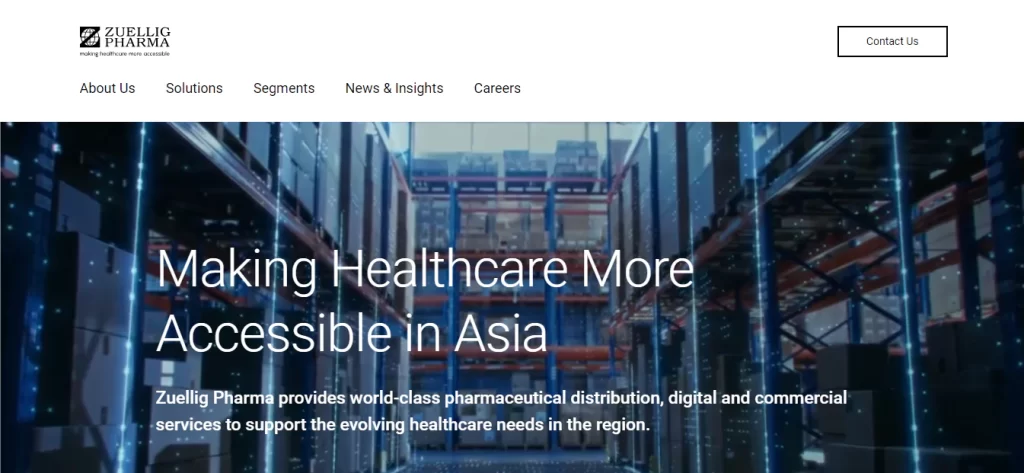
The company’s decision led them to select a business suite powered by SAP HANA, hosted on Microsoft’s Azure platform. Collaborating closely with SAP’s enterprise advisory team, Zuellig Pharma undertook a meticulous migration journey. Continuous quality checks were conducted at every phase of data transfer, ensuring a seamless transition and uninterrupted operations.
Throughout the migration process, SAP’s advisors played a pivotal role. They closely monitored the migration, addressing critical issues as they emerged. This hands-on approach ensured a smooth and fluid process, culminating in the establishment of a cloud-based business platform.
The remarkable outcome of this endeavor was an astounding 66% estimated increase in application performance compared to Zuellig Pharma’s previous on-site integrations. This enhanced posturing is of utmost significance in Asian markets, which are experiencing rapid growth in cloud and edge computing. The optimization achieved through the migration aligns perfectly with the evolving needs of these markets.
Recommended reading: Enterprise Cloud Solutions: Powering Business Growth in the Digital Age
Possible Pitfalls & Solutions with Data Center Migration
While successful data center migration strategies offer numerous benefits, the journey is not without its challenges. Navigating the intricate landscape of migration demands careful planning, comprehensive understanding, and an awareness of potential pitfalls. This section delves into some of the common challenges and pitfalls that organizations may encounter during the process of data center migration strategy implementation.
Unexpected downtime
One of the most prevalent data migration challenges that organizations often encounter is the risk of unexpected downtime. While migration aims to enhance efficiency and streamline operations, the transition process itself can inadvertently lead to temporary service disruptions.
Unexpected downtime refers to the unforeseen interruption of critical services and applications during the migration process. This phenomenon can occur due to various reasons, such as technical glitches, compatibility issues, or improper planning. While such interruptions are usually temporary, they can have a significant impact on business operations, leading to loss of productivity, revenue, and customer trust.
Data loss
For a data center migration strategy, the specter of data loss looms as a significant concern. As businesses transition their critical information and applications from one environment to another, the potential for data loss becomes a pressing challenge that requires careful consideration and proactive measures.
Data loss refers to the unintended and often irreversible disappearance of valuable information during the migration process. This phenomenon can occur due to various factors, such as technical glitches, misconfiguration, or inadequate backup strategies. Losing crucial data can have far-reaching consequences, leading to operational setbacks, compliance issues, and reputational damage.

To counter the risk of data loss during migration, organizations must adopt a multi-pronged approach. This includes comprehensive data backup strategies, meticulous testing of migration processes, and the use of reliable migration tools. Regular validation and monitoring of data integrity are crucial in ensuring that the migrated data remains intact and accessible.
Compatibility issues
In a data center migration strategy, the challenge of compatibility issues often emerges as a formidable hurdle that businesses must address. When migrating systems, applications, and data from one environment to another, ensuring seamless compatibility between the existing and target platforms becomes a paramount concern.
Compatibility issues refer to the conflicts and incompatibilities that can arise when transitioning data and applications from legacy systems to modern cloud or data center environments. These issues can result from differences in software versions, operating systems, database structures, or other technical aspects. If not effectively managed, compatibility issues can lead to errors, service disruptions, and compromised data integrity.
To tackle the complexity of compatibility issues, meticulous planning and testing are essential. This includes conducting thorough compatibility assessments prior to migration, identifying potential conflicts, and devising strategies to address them. Collaboration with experienced migration experts and utilizing specialized migration tools can also play a vital role in ensuring smooth transitions without disruptions.
Inadequate resource allocation
As businesses undertake the journey of data center migration strategy, one challenge that can significantly impede success is inadequate resource allocation. This pitfall arises when organizations underestimate the resources required to execute a seamless migration, leading to a range of issues that can impact the overall process.
Inadequate resource allocation refers to the situation where businesses allocate insufficient manpower, time, budget, or technical expertise to the migration process. This can lead to delays, incomplete migrations, compromised data security, and even financial losses. Without proper resource allocation, the migration strategy may fall short of its objectives, undermining the anticipated benefits.
To mitigate the risk of inadequate resource allocation, organizations must take a comprehensive approach. This includes conducting a thorough assessment of the migration’s scope and requirements, involving skilled personnel at every stage, and securing the necessary budget and tools. Collaborative planning, continuous monitoring, and adaptability are key to ensuring that the migration process is adequately supported.
FURTHER READING: |
1.Virtual Machine Host 101: Everything You Need to Know |
2.How to Choose a Web Hosting Provider That Meets Your Needs |
3. How Virtualized Infrastructure Transforms IT Operations |
Leverage 1Byte’s strong cloud computing expertise to boost your business in a big way
1Byte provides complete domain registration services that include dedicated support staff, educated customer care, reasonable costs, as well as a domain price search tool.
Elevate your online security with 1Byte's SSL Service. Unparalleled protection, seamless integration, and peace of mind for your digital journey.
No matter the cloud server package you pick, you can rely on 1Byte for dependability, privacy, security, and a stress-free experience that is essential for successful businesses.
Choosing us as your shared hosting provider allows you to get excellent value for your money while enjoying the same level of quality and functionality as more expensive options.
Through highly flexible programs, 1Byte's cutting-edge cloud hosting gives great solutions to small and medium-sized businesses faster, more securely, and at reduced costs.
Stay ahead of the competition with 1Byte's innovative WordPress hosting services. Our feature-rich plans and unmatched reliability ensure your website stands out and delivers an unforgettable user experience.
As an official AWS Partner, one of our primary responsibilities is to assist businesses in modernizing their operations and make the most of their journeys to the cloud with AWS.
Conclusion
In the fast-paced digital landscape, where agility and efficiency reign supreme, a well-executed data center migration strategy can be the game-changer that organizations need. Through real-life cases, this article has illuminated the transformative potential of migration, showcasing how businesses across diverse industries have harnessed the power of migration to drive growth, streamline operations, and optimize resources.
From the energy sector to healthcare, finance to real estate, each case underscores the significance of meticulous planning, collaboration, and leveraging the right tools and partnerships. These real-world scenarios have provided invaluable insights into the benefits that businesses can reap by adopting a strategic approach to data center migration.
However, the path to success is not without its challenges. The potential pitfalls discussed—unexpected downtime, data loss, compatibility issues, and inadequate resource allocation—serve as cautionary tales, urging businesses to approach migration with careful consideration and proactive measures.
As businesses embark on their own migration journeys, they stand to gain from the lessons learned by those who have tread this path before. By embracing best practices, seeking expert guidance, and maintaining a clear focus on their data center migration strategy, organizations can confidently navigate the complexities of migration and emerge stronger, more agile, and better equipped to thrive in the ever-evolving digital age.

